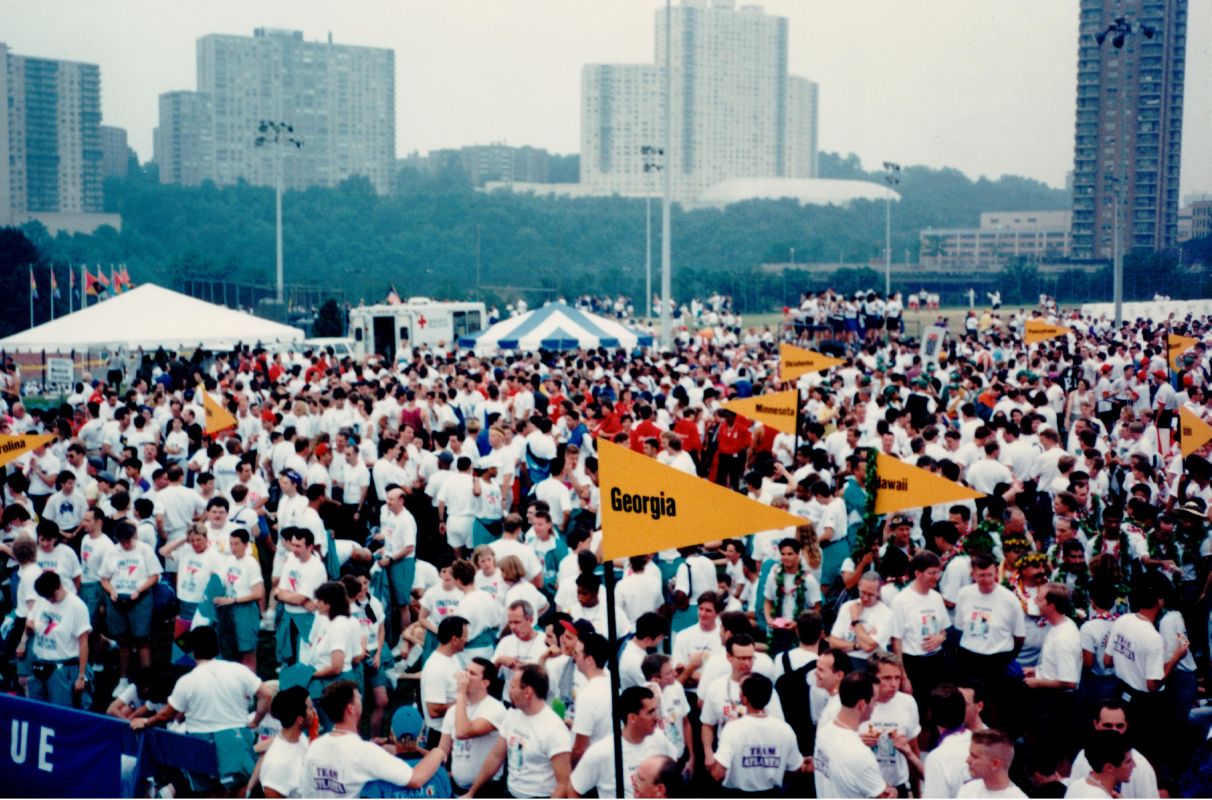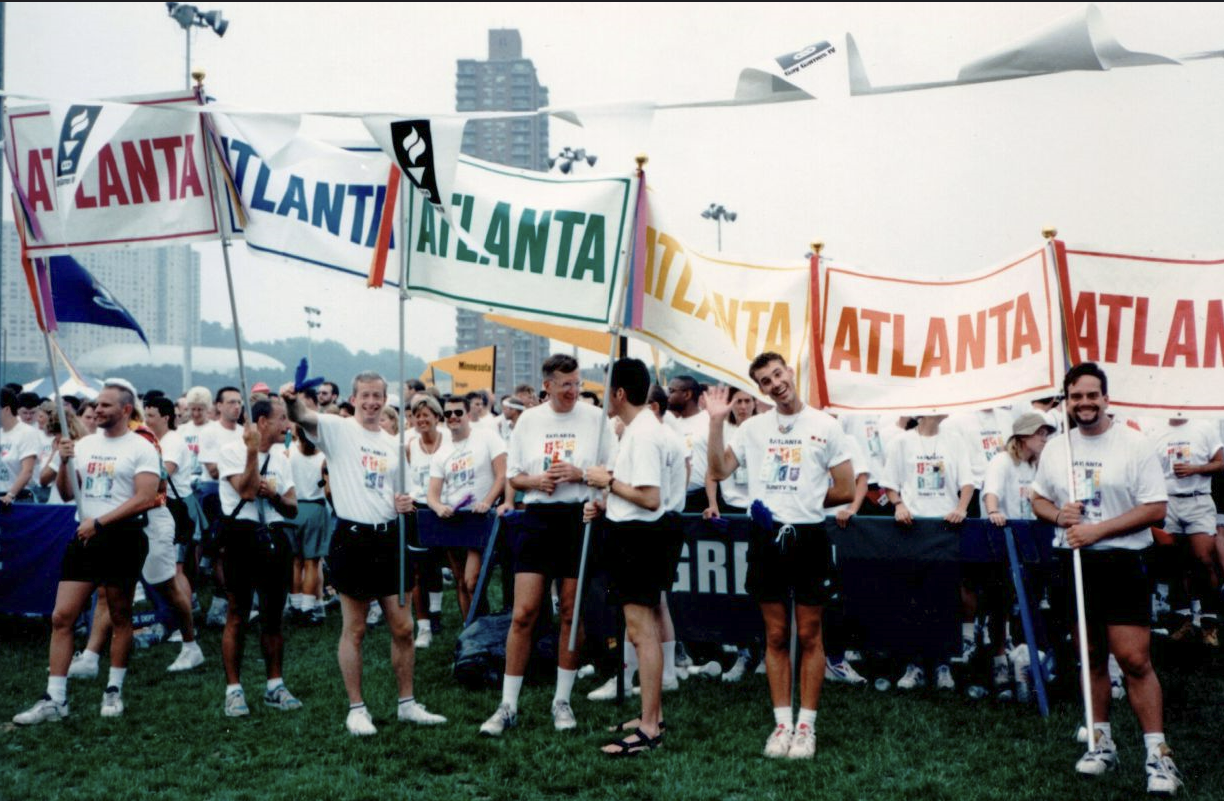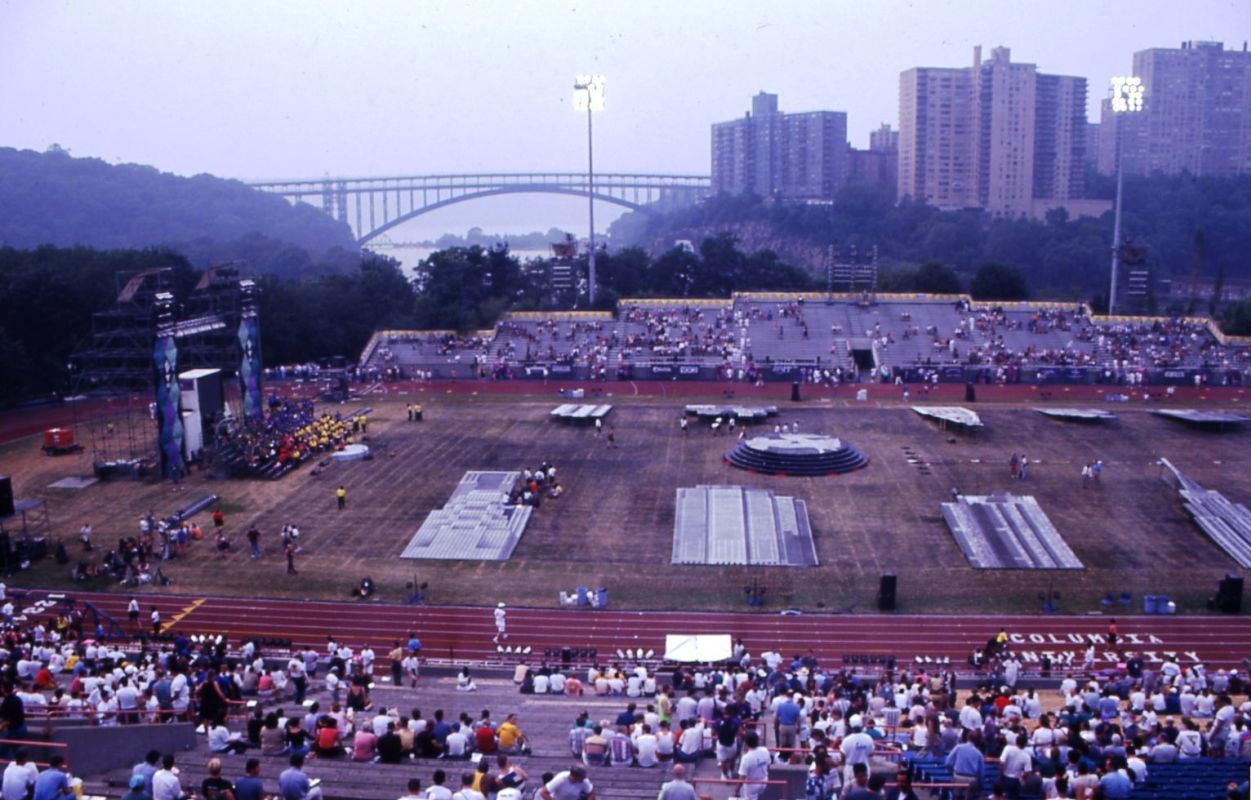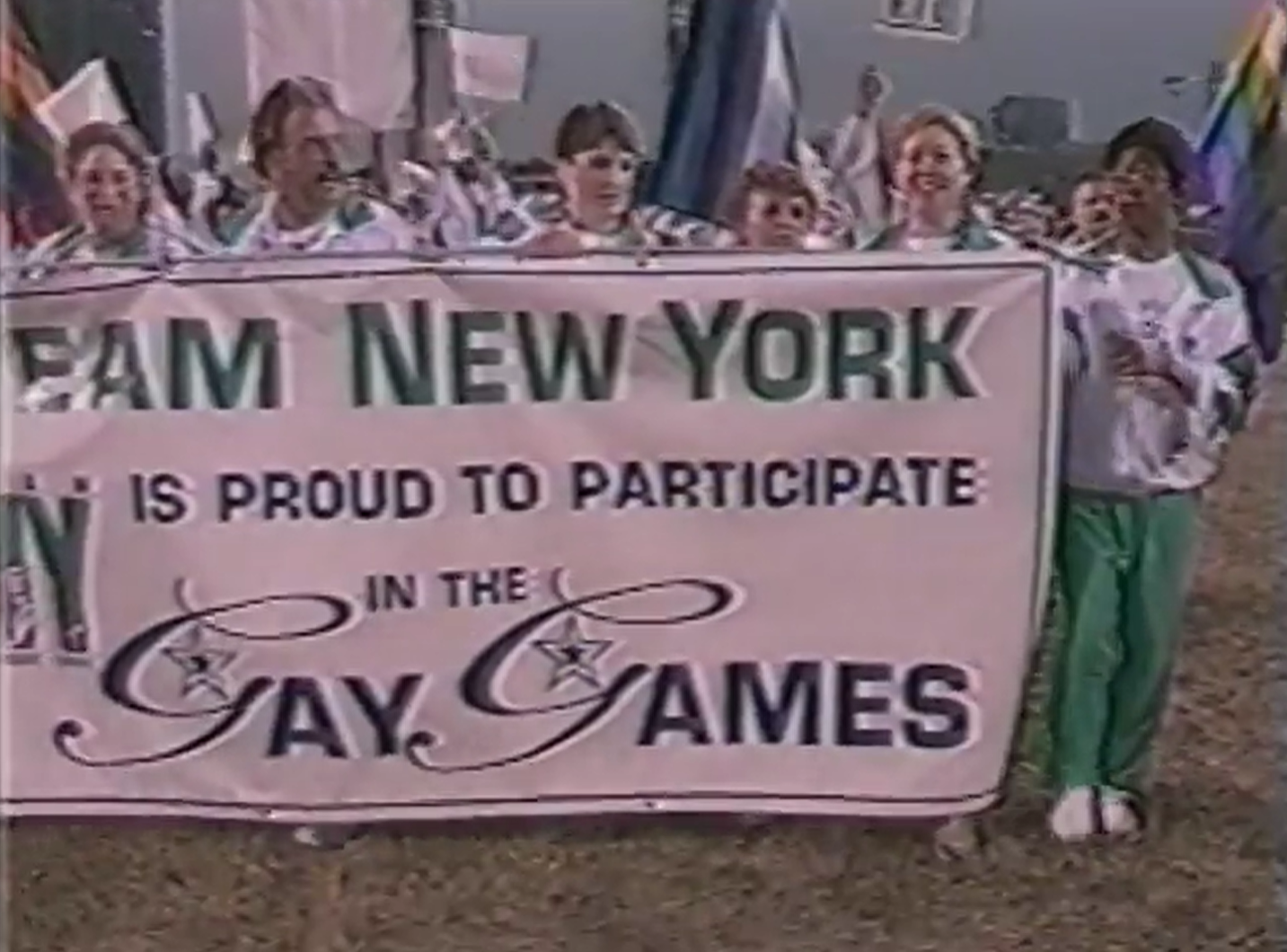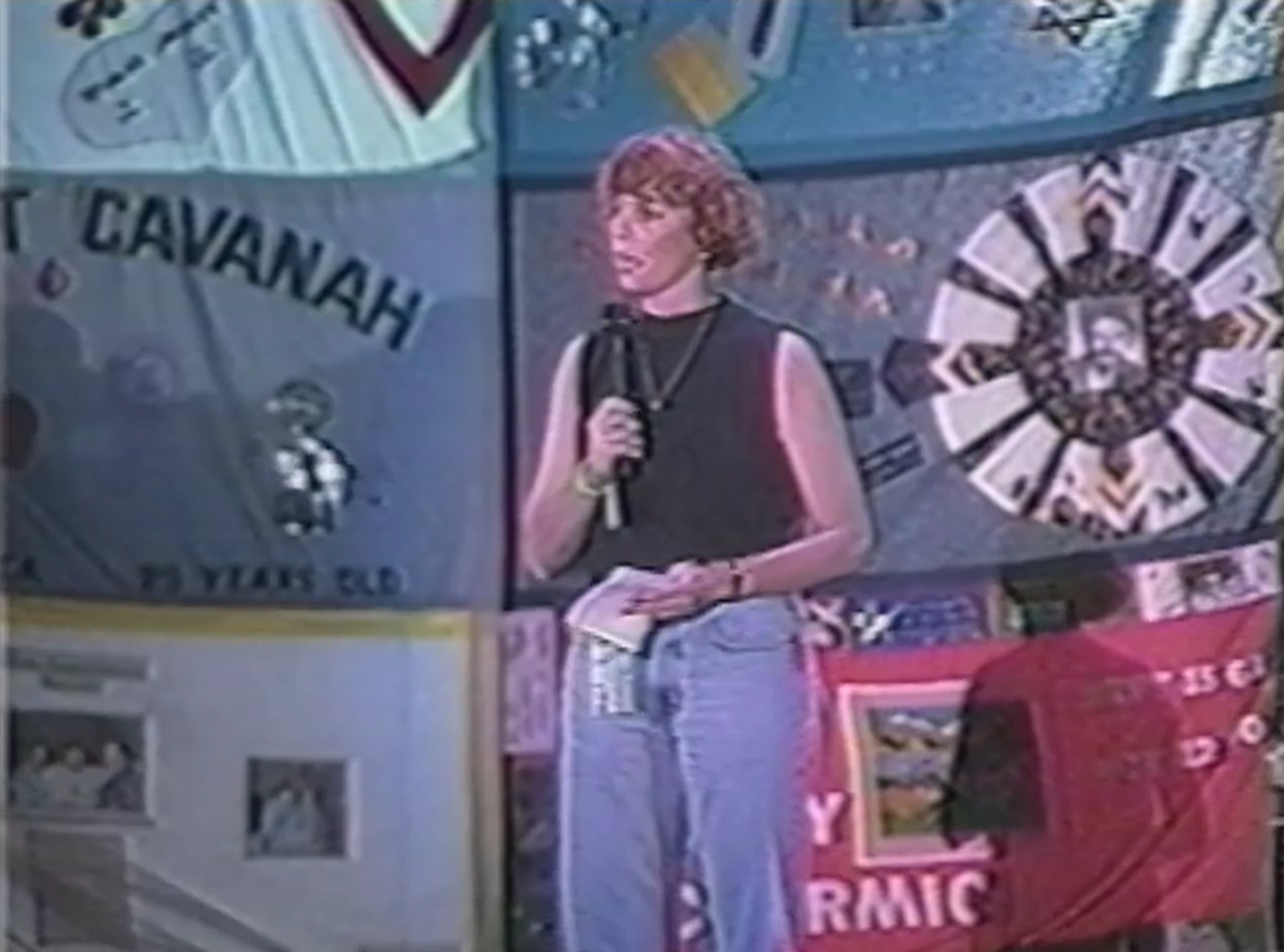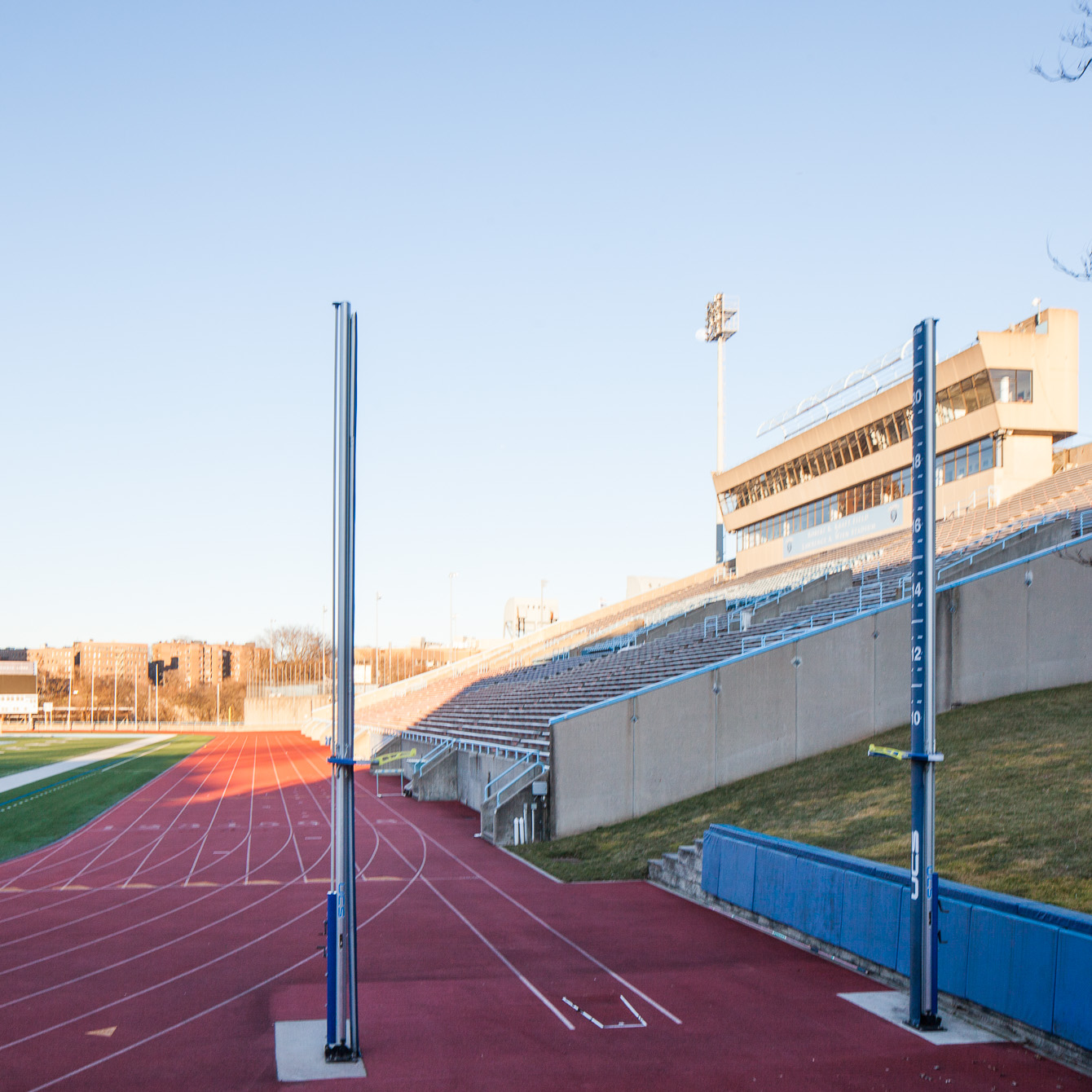
Gay Games IV Opening Ceremony at Wien Stadium
also known as Columbia University’s Lawrence A. Wien Stadium at Baker Field
overview
Gay Games IV, held in New York City from June 18 to 25, 1994, brought together athletes, performance artists, and spectators from around the world to take part in what was then the largest sports and culture event to welcome and celebrate the LGBT community.
The Opening Ceremony took place at Columbia University’s Wien Stadium in the northern tip of Manhattan and hosted a record 11,000-plus LGBT athletes and over 13,000 spectators.
History
Dr. Tom Waddell (1937-1987), a gay man and Olympic decathlete, envisioned an inclusive event at the crossroads of sports, culture, and social justice. In 1982, he founded the Gay Olympics in San Francisco. The United States Olympic Committee, however, went to court to prevent the use of the word “Olympics,” even though other groups were using it without issue. The name was then changed to the Gay Games.
With gay men’s sexuality under increased attack because of the AIDS epidemic, Waddell called the Gay Games “a statement on the quality of our lives.” The Games also stood in sharp contrast to the homophobic world of sports by giving LGBT athletes the opportunity to compete without having to hide an important part of their identity.
To coincide with Stonewall 25 (the 25th anniversary of the Stonewall uprising), the Federation of Gay Games, the event’s international governing body, chose New York as the host city for the 1994 Games and, for the first time, held it in June. NY in ’94, a nonprofit organization, ran the event. Gay Games IV (also known as Unity ‘94) took place from June 18 to 25, 1994, and included a citywide Cultural Festival featuring 2,500 artists. Together, the Games and Stonewall 25 engaged participants “in what was the largest and most international gay and lesbian pride event and parade ever staged,” notes Caroline Symons in The Gay Games: A History.
The Opening Ceremony took place on Saturday, June 18th, at Columbia University’s Wien Stadium at the northern tip of Manhattan. A pre-show at 6:00 p.m. was followed by the Athlete Procession at 7:30 p.m. A record 11,000-plus LGBT athletes from 20 countries and more than 13,000 spectators took part (in comparison, the Olympics have only exceeded 11,000 athletes in 2016 and 2020). Ahead of the ceremony, one athlete said:
This is an environment in which I’m finally being celebrated for what I do best. I can’t imagine what it’s going to be like to walk out there as an open lesbian and have a whole stadium of people cheer me.
Broadway theater talent contributed to the Opening Ceremony, described in the official Games guide as “truly Olympian in scope.” New music was composed by Henry Krieger and Eric Schorr, field performances by 200 dancers were choreographed by Jerry Mitchell, sets were designed by Jerome Sirlin, and Aaron Lee Battle sang. A 300-foot-long Rainbow Flag – which became part of Gilbert Baker’s record-setting, mile-long flag at the NYC Pride March eight days later – was unfurled on the field.
Joe Steffan, expelled from the U.S. Naval Academy in 1987 after disclosing he was gay, sang the national anthem. Lt. Zoe Dunning, one of the few openly gay U.S. military members when “Don’t Ask, Don’t Tell” became law in 1994, remembered those who died of AIDS. Other speakers included Virginia Apuzzo, LGBT rights activist; David Kopay, a retired football player who, in 1975, became one of the first professional athletes to come out as gay; Dave Pallone, a former Major League Baseball umpire who was fired after being outed in 1988; and Bill T. Jones, co-founder of the Bill T. Jones/Arnie Zane Dance Company.
In a pre-recorded welcome video, four-time Olympic gold medalist Greg Louganis, widely considered the greatest diver in history, came out publicly as gay to a cheering crowd. In a message written by Eric Marcus, who was then co-writing Louganis’s autobiography, Louganis said, in part:
It’s exciting to be a part of an event that demonstrates true Olympic ideals, to show ourselves and the world how strong we are as individuals and as a community. Welcome to the Gay Games! It’s great to be out and proud.
Louganis, retired from competition, participated in a four-dive exhibition at the Gay Games, his first athletic appearance as an openly gay man. Throughout the week, 31 sporting events took place at 30 venues in Manhattan, the Bronx, Brooklyn, Queens, the Hudson Valley, and New Jersey. Thirteen sports were sanctioned by their national governing boards, thereby officially recognizing any records that were set.
To attend the Games, international athletes with HIV had to apply for a special waiver due to a U.S. law enacted in 1987 that prohibited HIV-positive visitors and immigrants from entering the country. Most athletes did not declare their HIV status for fear of reprisal; only a few dozen, largely from European countries, applied for the waiver. Carlos Reynoso, Games coordinator for athletes from Latin American countries, where no one applied, said, “It’s hard enough being gay, but to declare officially that you have the AIDS virus too is like a death sentence in some countries.”
The 1994 Gay Games made an unprecedented number of LGBT people visible in sports at a time when tennis champion Martina Navratilova, a major financial supporter of the Games, was reportedly the only openly gay active professional athlete in North America. The Closing Ceremony was held on Saturday, June 25th, at the old Yankee Stadium (since demolished and replaced) in the Bronx. Broadway star Harvey Fierstein, actor Sir Ian McKellen, singers Cyndi Lauper and Patti LaBelle, and other notables appeared in front of nearly 55,000 people.
The Gay Games, one of the world’s largest sports and culture events, are still held every four years. Gay Games XII will take place in Valencia, Spain, in 2026, and the selection process for the host city for 2030 is underway (see links below).
Entry by Amanda Davis, project manager (July 2024).
NOTE: Names above in bold indicate LGBT people.
Building Information
- Architect or Builder: Dattner Architects
- Year Built: 1983-84; 1986 (west stands)
Sources
Andrew D. Linden and Lindsay Parks Pieper, “The Gay Games: Then and Now,” Sport in American History, August 21, 2014, bit.ly/3LtR8Qf.
Ann Northrop, Member of the Board of Directors of NY in ’94, email to NYC LGBT Historic Sites Project, July 29, 2024.
Carl Freis, Budget Director of NY in ‘94, email to NYC LGBT Historic Sites Project, April 24, 2019.
Caroline Symons, The Gay Games: A History (Abingdon, United Kingdom: Routledge, 2010), 145.
Charley Beal, The Gilbert Baker Foundation, emails to Amanda Davis/NYC LGBT Historic Sites Project, July 16, 2024.
Frank Bruni, “Pride will predominate during the 1994 Gay Games,” The Times Leader, June 5, 1994, 5D. [source of Bridges pull quote]
The Games Guide, June 1994, via University of North Texas Libraries Special Collection, bit.ly/4d4MAM6.
“GGIV Opening Ceremonies Highlights,” YouTube, Kile Ozier, bit.ly/4fcYA03.
Greg Louganis, with Eric Marcus, Breaking the Surface (Naperville, Illinois: Sourcebooks, Inc., 1995).
Jessie Mangaliman, “Gay Games Gamble,” Newsday, June 17, 1994, A24. [source of Reynoso quote]
Laura Price, “Gay Games IV: A Celebration,” Newsday, August 1, 1993, 19.
“Louganis 1994,” YouTube, Kile Ozier, bit.ly/4d1T9Q9. [source of Louganis pull quote]
“Our history,” The Federation of Gay Games, bit.ly/3zHLqHW.
“Tom Waddell: A Statement on the Quality of Our Lives,” interview with Mary Anne McEwen, 1983, via YouTube, VIVO Media Arts Centre. [source of Waddell quote]
Scott Maier, “Games aim to promote acceptance,” Austin American-Statesman, June 22, 1994, E2.
Do you have more information about this site?
This project is enriched by your participation! Do you have your own images of this site? Or a story to share? Would you like to suggest a different historic site?


